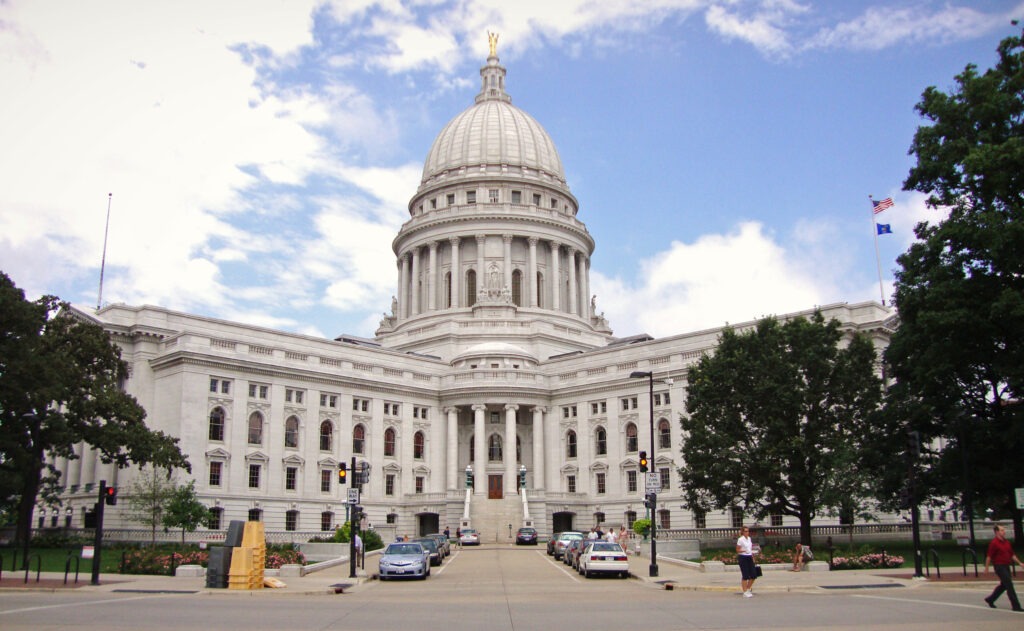
The Wisconsin Supreme Court held a contentious hearing this week over a high-profile lawsuit seeking to redraw the state’s legislative maps. The case has sparked intense debate across the state about gerrymandering and fair representation.
Recently elected liberal Justice Janet Protasiewicz immediately found herself in the hot seat as arguments got underway. Attorneys for both sides grilled each other over the motivations behind the suit and broader issues around redistricting reform.
The arguments underscore rising tensions over Wisconsin’s electoral maps, which many allege unfairly favor Republican interests. Democrats hope the new 4-3 liberal majority on the bench could lead to a monumental ruling ordering state districts to be reconfigured before 2024 elections.
Lawsuit Argues Current Maps are “Extreme Partisan Gerrymanders”
The case itself was filed recently by a group of Democratic voters, represented by attorney Mark Gaber. In their complaint to the court, plaintiffs contend Republican-drawn state Senate and Assembly maps constitute “extreme partisan gerrymanders” violating the Wisconsin Constitution.
Specifically, they highlight how the existing lines result in numerous noncontiguous districts—with disconnected pockets of voters lumped together. The plaintiffs assert this shows lawmakers prioritized partisan goals over core redistricting criteria when passing the plans last year.
Citing these “unconstitutional” maps, the lawsuit calls for a total redraw of all 132 legislative districts under court supervision prior to next year’s state elections. If successful, their legal challenge could diminish the GOP’s control in both the Assembly and Senate.
Republicans currently enjoy a commanding 64-35 advantage in the lower chamber. They also hold a solid 22-11 majority in the upper chamber. Reconfigured nonpartisan maps could cut into these margins in 2024.
Justice Protasiewicz Faces Ethics Questions
The case is also putting Justice Protasiewicz’s impartiality under the microscope. Attorneys for the state Legislature directly confronted her past commentary that allegedly pre-judged the dispute.
During her election campaign this spring, Protasiewicz told audiences Wisconsin’s maps are “absolutely, positively rigged” against ordinary citizens. She further claimed no reasonable person could view them as fair.
In light of those assertions, Republican lawmakers floated possibly impeaching Protasiewicz if she declined to recuse herself from redistricting lawsuits. However, former justices contend such threats lack legal grounds or precedent.
Nonetheless, the newly minted justice faced repeated questions about her earlier remarks amid Tuesday’s arguments. GOP counsel Taylor Meehan pressed the plaintiffs’ lawyer on whether he would have even brought the case had Protasiewicz lost her race.
“You would not have brought this action, right, if the newest justice had lost her election?” conservative Justice Rebecca Bradley pointedly asked Gaber. But he maintained groups had already pledged to file suit regardless of the election outcome.
Debating the Legal Merits of Contiguity Claims
Beyond the subtext around Justice Protasiewicz, attorneys also sparred over the lawsuit’s core legal assertions regarding contiguous districts. Meehan argued on behalf of her legislative clients that all existing maps meet constitutional muster.
She stressed how lower courts have previously upheld the configurations multiple times. Meehan also debated the meaning of contiguity with liberal justices like Rebecca Dallet.
“Forty-five of the 99 Assembly districts…do not have any municipal islands,” Meehan initially claimed. But Dallet pushed back this suggests nearly half of all districts fail to be geographically contiguous blocs of voters.
“So only 45…are contiguous,” Dallet countered.
The two proceeded to dispute terminology over so-called “islands” of detached voters versus “contiguous” groupings. Expect more parsing of constitutional language as the case proceeds.
Parties Grapple With Achieving Fairer Maps
Attorneys additionally crossed swords over how to even define and construct neutral district boundaries. Extended back-and-forths touched on balancing various redistricting criteria.
Conservatives like Justice Brian Hagedorn prodded the plaintiffs’ team on what threshold for GOP-leaning seats they would accept. But Deputy Attorney General Anthony Russomanno avoided offering any “particular line” to assess partisan tilt. He suggested comparing multiple hypothetical maps instead.
However, these exchanges spotlighted the deeper challenge both sides face articulating discernible standards for politically “fair” electoral districts. With redistricting an inherently political exercise, consensus remains elusive.
All In All, Maps Case Adds to Perception of Increased Court Politicization
On the whole, many nonpartisan observers argue this case risks further politicizing the state’s high court itself. They note how it follows years of ugly tough-on-crime judicial races fueled by special interest spending. Such dynamics threaten the impartiality Wisconsin residents expect from their Supreme Court.
Of course, some contend legislative redistricting disputes fall squarely within the court’s jurisdiction as constitutional questions. But others worry voters will increasingly view outcomes as driven by ideological leanings rather than neutral legal analysis.
With the newly constituted liberal majority, some even predict overt legislative attempts to curb the bench’s powers. Certainly, last month’s elections emboldened those favoring an assertive judicial role over gerrymandering. But institutional skirmishing may only worsen going forward.
What Comes Next With Wisconsin Redistricting Case
In any event, a definitive ruling on the redistricting challenge likely remains months away. Most expert forecasts point to a decision at some stage in early 2024.
If the court eventually sides fully with the plaintiffs, it could order a special master to draw remedial state legislative maps void of current partisan skew. But justices may also craft a more incremental or mixed verdict.
For now, all eyes look ahead to however the tribunal handles its most high-profile case in years. The arguments this week represent merely opening salvos in what promises to become a protracted redistricting fight at the highest levels.
Any conclusive outcome constitutes a potential inflection point for Wisconsin’s political landscape this entire decade. Get ready for additional tense court showdowns well into the new year.




















